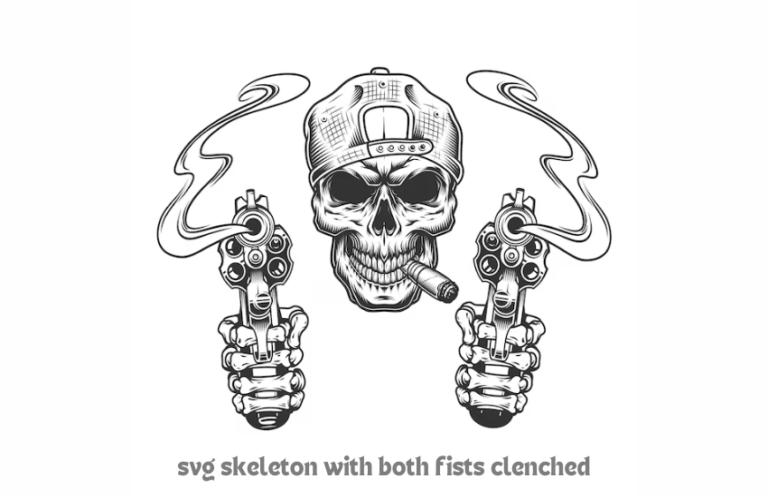But how do you create an SVG skeleton that’s visually engaging and dynamic? This article focuses on one specific, powerful pose: a skeleton with both fists clenched.
Anatomy of a Clenched Fist Pose in SVG
Breaking Down the Human Hand in SVG
The human hand consists of several bones, muscles, and joints that flex to create a clenched fist. In SVG form, these can be represented as a combination of lines, circles, and curves using paths (<path> element). For a skeleton, however, we’re primarily focused on the bones — particularly the phalanges (finger bones) and metacarpals (bones connecting fingers to the wrist).

Representing the Clenched Fist in SVG
Each finger’s phalange bends in a specific arc to create a fist. In SVG, this can be accomplished by manipulating Bézier curves and arcs. The palm itself will be slightly curved to reflect the tension in a clenched fist. By overlapping and rotating these elements, we can mimic the appearance of a clenched fist.
Creating a Skeleton Figure in SVG
Tools Needed for SVG Skeleton Creation
Creating SVGs requires a vector graphics editor. Some popular tools include:
- Inkscape (open-source)
- Adobe Illustrator
- Figma (browser-based design tool)
- SVG-edit (free, browser-based editor)
For coding SVG manually, you can use any text editor, such as Sublime Text, VS Code, or even Notepad++.
Steps to Draw a Basic Skeleton
Start by outlining the skeleton’s major bones: the skull, ribcage, arms, legs, and spine. Use simple lines (<line>) and circles (<circle>) to draw these elements.
Adding Dynamic Poses to Skeleton Graphics
Adding poses, such as clenched fists, involves manipulating joint positions and adding the necessary details to make the pose realistic. This includes rotating the shoulder and elbow joints to position the fists forward and applying curvature to fingers for a clenched effect.
Drawing Both Fists Clenched in SVG
To draw both fists clenched, you’ll need to focus on the arm positioning first. Adjust the skeleton’s arms so that they are bent at the elbows, bringing both hands closer to the chest or down at the sides, depending on your intended pose. The fists themselves should be represented with tightly curled fingers.
Structuring the Fingers for a Clenched Fist
Use SVG paths to structure each segment of the fingers. Each phalange should have a curve that shows the natural bending of the bones in a fist. You’ll want to rotate and layer these paths to ensure the thumb and other fingers overlap correctly, making the fists appear tight and clenched.

Adjusting Proportions for Realism
Proportion is key. Ensure that the skeletal hand is scaled correctly in relation to the rest of the skeleton. The size of the fists should be appropriate, and their position must look natural in relation to the arms and torso.
This is just a basic structure of a single clenched hand. More complex paths can be added to represent fingers, wrist bones, and further anatomy details.
Enhancing the SVG Skeleton with CSS and Animations
SVGs can be animated and styled with CSS. You can give the skeleton a more polished look by adding animations to the fists, making it look like they are clenching and unclenching.
Conclusion
Creating an SVG skeleton with both fists clenched requires attention to detail, especially when it comes to anatomical accuracy and smooth vector lines. Whether you’re designing it for animation, artistic purposes, or educational tools, SVG’s flexibility ensures that your creation will look great on any screen.
